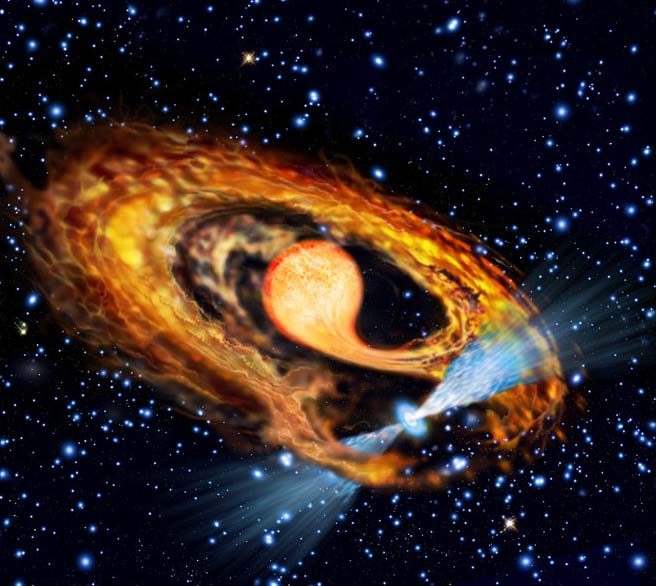Pulsars with Millisecond Rotation
When a star with a mass of approximately ten times that of the Sun reaches the end of its life, it undergoes a supernova explosion, resulting in the formation of a neutron star as a remnant. Neutron stars have masses ranging from one to several times that of the Sun, but they have a remarkably small diameter, measuring only tens of kilometers. These neutron stars rotate at a rapid pace, and if they possess magnetic fields, charged particles trapped within them emit electromagnetic radiation in a beam similar to that of a lighthouse. This beam regularly sweeps past the Earth every few seconds or even less frequently. These specific types of neutron stars are known as pulsars, and they serve as powerful and dramatic tools for studying supernovae, their parent stars, and the unique properties of nuclear matter found within these celestial bodies.
Millisecond pulsars are a subset of pulsars that rotate at an exceptionally high speed, spinning hundreds of times per second. Astronomers have determined that these pulsars increase their rotation rates by accreting material from a nearby companion star. Currently, there are nearly 3000 known millisecond pulsars, with approximately five percent of them being located within globular clusters. Globular clusters are gravitationally bound collections of stars, typically spherical in shape, and can contain up to a million stars within a relatively small diameter of only tens of light-years. The dense environment of globular clusters provides favorable conditions for the formation of binary star systems, and as a result, nearly eighty percent of the pulsars found within these clusters are millisecond pulsars. One notable example is the globular cluster 47 Tucanae (47 Tuc), which harbors twenty-five millisecond pulsars.

Maureen van den Berg, an astronomer from CfA, collaborated with a team of astronomers to investigate four peculiar millisecond binary pulsars in 47 Tuc whose orbital parameters were unknown. Understanding the orbits is crucial in comprehending the origin and evolution of pulsars, their mass transfer and speed-up rates, and even the precise masses of the stars.
The researchers meticulously analyzed data from 519 radio observations of 47 Tuc collected over a span of sixteen years. Among the set, the shortest period pulsar has a period of merely 0.15 days. On the other hand, the longest period pulsar spans 10.9 days (both values known to nine decimal places) and possesses an orbit that is remarkably circular, surpassing even that of Earth. In fact, it is the most circular system ever discovered in a globular cluster. The astronomers hypothesize that this binary pulsar likely formed when a neutron star encountered a binary star, captured its companion from the binary, and subsequently began accreting material from it, ultimately transforming into a pulsar. Another, less probable scenario suggests that the binary pair formed and evolved together.
The scientists conducted similar analyses for the remaining three objects. These findings, the initial installment in a series of papers on the millisecond pulsars in 47 Tuc, provide a comprehensive characterization of four of its pulsars, including one of its most extraordinary ones. Furthermore, they offer fresh insights into the formation of these objects and the environmental conditions within a globular cluster.
This article is republished from PhysORG under a Creative Commons license. Read the original article.
Do not forget to share your opinion with us to provide you with the best posts !




0 Comments